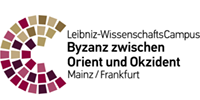Transformations and Intercultural Contacts East and West. Church and Religion in Cyprus (4th to 9th centuries)
The island of Cyprus was favoured and promoted by the late antique emperors. Cyprus was an intellectual centre and a site of theological debates, something that was promoted, for example, by contacts made through travel and correspondence with Egypt, Palestine and Rome. The history of the bishops and bishoprics and of the theological debates, the traditions of ritual and liturgy, hagiography, and dedications of churches and their furnishings have before now hardly been connected to any context beyond Cyprus itself. International networks and interaction and their concrete effects on the development of the Church in Cyprus will be at the centre of this four-year project. Embedded in detailed questions of influences and the dynamics of development, this new study of the physical material and the textual sources is intended to highlight the island’s relevance as a key link between the traditions of the Levantine coast, monastic influences from Egypt, the influence of the bishops of Constantinople, of Antiochia, of Rome, as well as other impact factors including those of Western Europe.
This project is affiliated to the Historic Seminar of Johannes Gutenberg-Universität Mainz, Arbeitsbereich Alte Geschichte (Prof. Dr. Marietta Horster).
Sponsorship
Leibniz-WissenschaftsCampus Mainz
Support
Leibniz-WissenschaftsCampus MainzPublications
- Marietta Horster, Doria Nicolaou, Sabine Rogge (eds.) Church building in Cyprus (fourth to seventh centuries): a mirror of intercultural contacts in the Eastern Mediterranean, (Münster 2018), ISBN 978-3-8309-3791-3
- D. Nicolaou, Liturgical Structures of Early Christian Basilicas of Cyprus: a Spatial Analysis, in: S. Rogge, M. Horster, D. Nicolaou (eds.), Church Building in Cyprus (4th to 7th Centuries) – a Mirror of Intercultural Contacts in the Eastern Mediterranean, Waxmann (Münster 2018) 119-151.













